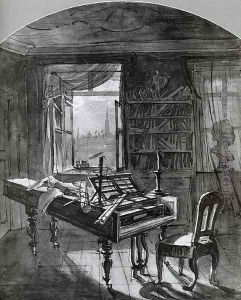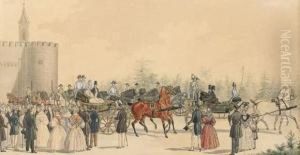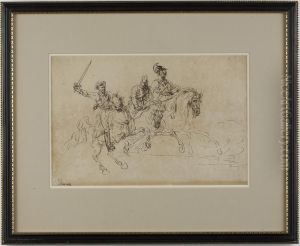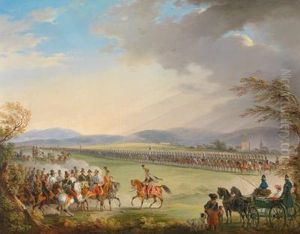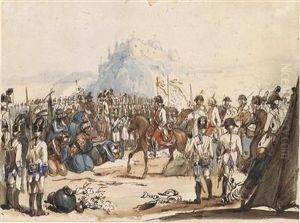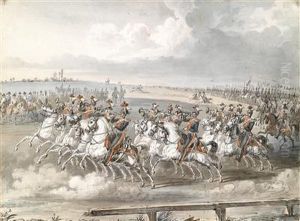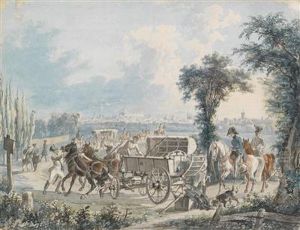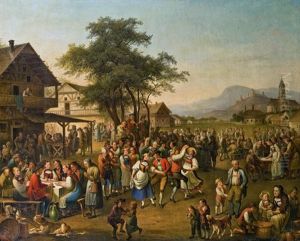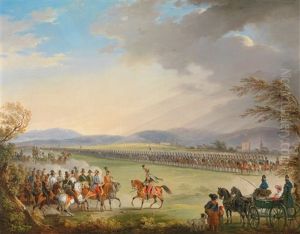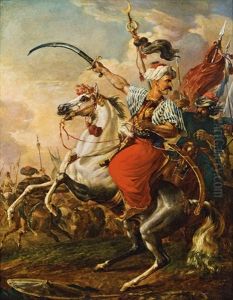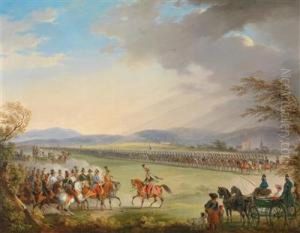Johann Nepomuk Hoechle Paintings
Johann Nepomuk Hoechle was an Austrian painter and engraver known for his historical scenes and lithographs. Born on March 13, 1790, in Vienna, Austria, Hoechle was a prominent artist during the Biedermeier period, a time characterized by a sense of security and simplicity in the arts amidst the conservative restoration after the Napoleonic Wars.
Hoechle's artistic talents were recognized early on, and he received his education at the Academy of Fine Arts Vienna, which was one of the foremost institutions for art at the time. After completing his studies, he began his career focusing on historical painting, which was a popular genre due to the public's interest in history and national identity. Hoechle's work was distinguished by his meticulous attention to detail and his ability to breathe life into historical events through his art.
Throughout his career, Hoechle served as a court painter to the Austrian Habsburgs, a position that afforded him both prestige and the opportunity to produce works for an elite audience. One of his notable works is a series of paintings depicting various battles from the Napoleonic Wars, which were well-received for their accuracy and dramatic representation.
Despite his success as a historical painter, Hoechle was also skilled in other mediums, including watercolor and lithography. He was among the early adopters of lithography in Austria and produced several notable prints. His early adoption and mastery of this technique helped popularize it in Austrian art circles.
Johann Nepomuk Hoechle's contributions to the Austrian art scene were significant, as he helped to preserve the nation's history through his paintings while also being instrumental in the development of lithography in the region. His works remain an important part of Austrian cultural heritage and can be found in various museums and collections throughout the country.
Unfortunately, Hoechle's life was cut short when he died on February 12, 1835, in Vienna, at the age of 44. Despite his relatively brief career, his works have left a lasting impact on the art world, providing us with a window into the aesthetics and historical perceptions of early 19th-century Austria.
